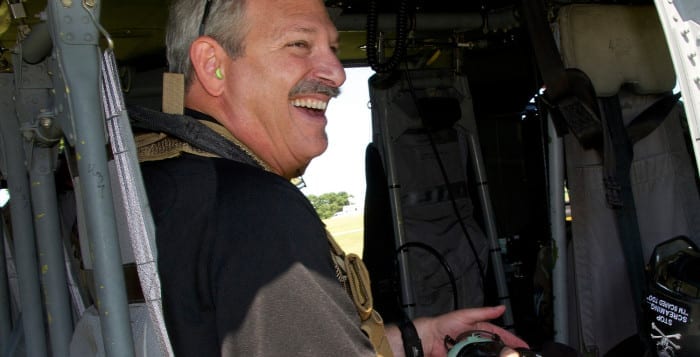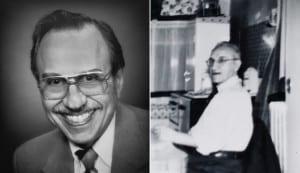BNL’s Michel trains groups to prepare for radiological incident

He has been to the Super Bowl, the Boston Marathon, a presidential inauguration, the Baltimore Grand Prix, the Rockefeller Tree Lighting and the ball drop in Times Square on New Year’s Eve. Lee Michel is neither a politician nor an athlete: He is part of a national, first-response team, called the Radiological Assistant Program.
The program is a unit of the Department of Energy, which assists local, state and federal agencies to characterize the environment, assess the impact to the local population and support decision makers on steps to minimize the hazards of a radiological incident.
Michel is the training and outreach coordinator in Region 1 of the program. He works with partner agencies around the country to deal with everything from the discovery of radiological material that someone might have accidentally brought home from a work site to an intentional detonation of a dirty bomb.
His job is a “full soup-to-nuts response to radiological material that shouldn’t be wherever it is,” Michel said.
He trains people at facilities around the country to understand “how to detect [radiation], how to contain it, how to identify it and how to mitigate it,” Michel said.
Kathleen McIntyre, the contractor operations manager for RAP Region 1, said her group is the first on-scene emergency response team representing the Department of Energy. One of nine programs around the country, the BNL team is responsible for a region that stretches from Maine to Maryland and to the Pennsylvania-Ohio border.
In addition to sports events and conventions, the team also assists with other high-profile events. In late September, the BNL RAP team will work with other agencies during Pope Francis’s visit to the United States.
In his job, Michel often travels to ensure he’s appropriately trained so he can teach other first-responder agencies. In the last several months, he’s been to Chicago, Albuquerque, Las Vegas, Boston, Connecticut and New Jersey.
These trips are necessary to create effective collaborations with local partners, said McIntyre. “Part of the thing that [Michel] does and does well is coordinate with our first-responder partners,” McIntyre said. The training and outreach ensure “if we are ever in a situation where we need to work together, this isn’t the first time we’ve met each other.”

While the mission hasn’t changed for the five years Michel has been in his role, the mechanisms have evolved.
“The equipment we’re using is much more sophisticated than what we had,” Michel said. “The software that runs the system or is used in conjunction with the system is much more advanced.”
Indeed, McIntyre said Michel regularly has to remain updated on the latest software and equipment, in the same way an owner of a laptop has to remain current on electronic updates.
Michel “has to be conversant with all these” systems, she said. “He has to hit the ground running. We don’t own every piece of radiological equipment out there. He needs to understand whatever he’s going to teach.”
McIntyre gives Michel “great kudos” for “rolling up his sleeves” as he tries to stay abreast of the changing technology.
In addition to training, Michel does exercises and drills with response teams, keeping the groups prepared to react to a wide range of potential radiological problems or events.
While the Radiological Assistance Program only has three full-time employees at BNL, the facility includes 26 volunteers.
Michel has been dealing with radiation for over 30 years, starting with eight years in the navy from 1981 to 1989 when he was a nuclear power operator.
Born and raised on Long Island, Michel is the third generation in his family to work at the Upton facility. His grandfather, Isadore Rosen, was stationed at Camp Upton during World War I. His uncle, Morton Rosen, took pictures for BNL for over 35 years. Michel, who lives in Holtsville, has two daughters, 26-year old Heather and 22-year old Michelle.
As for a fourth generation at BNL, Michel holds out some hope. “I would love to have one of them work here,” he said. He’s even entertained the idea of his seven-month old granddaughter Jemma one day contributing to BNL.
While the work involves traveling to high-profile events, it’s sometimes tough to soak in the atmosphere.
The 2009 inauguration involved working 14-hour shifts in single digits, McIntyre said. After their work, they come back for more assignments. These contractors and volunteers “who serve on the RAP teams are dedicated professionals.”






